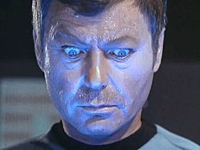Turntable notation?
 prof_rockwell
2,867 Posts
prof_rockwell
2,867 Posts
Anyone ever use this? I'm talking about:http://ttmethod.com/or any kind of 'scratch notation'.
 prof_rockwell
2,867 Posts
prof_rockwell
2,867 Posts
Comments
but no, haven't used it.
Personally I just don't find notation ever comparing to listening to the original song or sound.
agreed. i respect the effort, but even back in the day, i always thought that this was too robotic of a way to handle shit. cuts should always be loose and unique to that moment. remember those graph/grid pieces of paper that used to be floating around? i think they were passing them out at the battle sounds nyc premier or something. i used them to write to-do lists on.
It's an idea that had its moment in time but its currency has always been micro-limited. To be honest, I had totally forgotten about the whole concept for the last few years but I suppose some DJs can find some utility with it.
oh ho! you're one of those turntablists.
Obviously, there is a huge challenge in that sounds or cadences can be played any number of different ways. For instance,you could do 16th notes as a series of flares, a series of chirps, crabs two click flares, baby scratches, etc....and I guess there in lies the rub; and that seems to be where this notation becomes really freaking difficult.
The basic cuts are pretty well covered in this notation. However what about all those cuts that you sort of invent by mushing different cuts together?
I guess what I mean to say is, the basics are pretty completely covered in this method, but I'm yet to see it cover the more ridiculous cuts that dominate the turntablist landscape.
One thing I think would be possible to do is create a weather chart (similar to the charts I've used in the past playing the drums in school). Rather than writing individual parts for the drum part they have a weather chart which tells you where the accents are for individual parts of the tune you are playing and it's up to you to decide how you are going to do that. This becomes somewhat of a collaborative effort between you and the conductor in that your conductor might say (your a little over the top there, I like you how are hitting the accents but take it down a notch and try to stay in the groove with the rest of the band...etc.); but at the end of the day, it's your own creative responsibility to fill in the gaps and there is no official written map of exactly how to pull that off.
I would love to see a definitive way to transcribe scratching but I think it's still on some
Again, this is an amazing start. However, I think there is something to be said about the fact that this method hasn't caught on universally and hasn't really been touched since 2005, to my knowledge.
Anyone remember those sites that showed how to do various cuts by showing you an animation of the fader as well as an animation which illustrated the cutting movement, as well? I think the invisiblskratchpiklz site had that or had links to it.
That was the best way for me to learn the basics of the more complicated cuts because I had no one to learn from at the time.
In a way, I feel this notation is too difficult. They are reinventing the wheel in the sense that 8th notes, quarter notes, sixteenth notes and the like are all present in turntablism and I think those notes should be present in the turntablist transcription. The trick is how to convey the way in which you play those notes (crabs? flares? orbitals? prisms?). Perhaps different symbols could be used while keeping the basic note values listed above.
I guess this is all basically lip service until someone gets off their ass and does it, though.
great! a nerdier explanation of something that's abundantly nerdy already.
Hey, you ask for it when you click on a topic called "turntable notation?". Besides you have the word phonics in your name; you're a nerd too. Welcome home! **pound and a bear hug**
well, it was more of a survey to see if anyone really even bought into the whole idea of this. I mean, I've known about this since '99/'00 but never really got into it myself, and I'm helping someone with a presentation on it for their class today, so I wanted to see if perhaps I was just